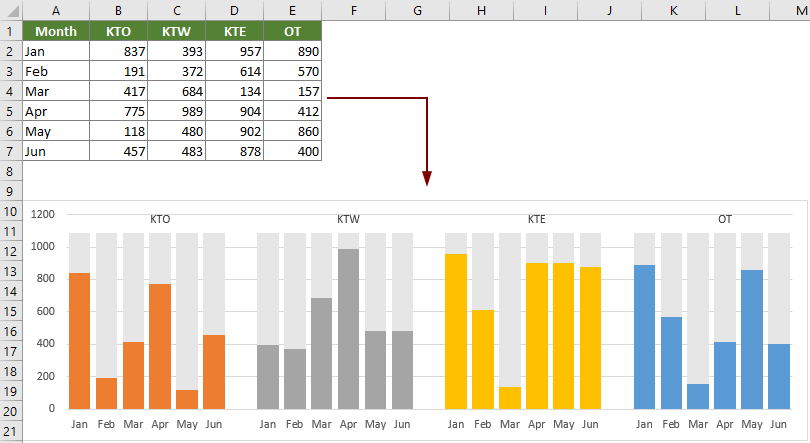
On top of these columns, a red line displays the cumulative total percentage.

If you choose pareto instead of histogram in the dialog box Insert Statistic Chart, you will get a rather similar graph (histogram-like) but where the columns are sorted in descending order from left to right. They do not necessarily match specific values from the dataset, but corresponds to the calculation that Excel makes to find the ranges. Note that the labels under the X-axis are the values which delimits the range of these 10 bars.
#PLOT HISTOGRAM IN EXCEL 2016 FREE#
Feel free to modify the look of your chart, to add titles, change colors and so on. Your chart now displays the distribution of your data according to the 10 ranges that you have defined. Note: Excel uses Scotts normal reference rule for calculating the number of bins and the bin width. Scroll down the page to get directions for creating pie charts, bar graphs, histograms, line graphs and scatter plots in Excel 2016. On the Insert tab, in the Charts group, click the Histogram symbol. Using the menu to the right, indicate the number of bins/bars (for example 10) or the bin width, and press Enter. If you have Excel 2016 or later, simply use the Histogram chart type. To do so, right-click on the X-axis and select Format Axis. From the Ribbon click Insert -> Charts -> See All Charts. Select the cells without the age range column (Cells B12 F24 in our example). Let’s suppose you have a list of employees (here is the list) and their period of employment with the company. The chart can be created with other versions of Excel, however, whilst the options may be in a different place, the principles are the same.

All you have to do now is to decide how many columns you want in your chart, or what will be the size of the ranges or bins which define the columns. If you are like me, using Excel 2016 I’ve got good news for you and the good news is, there is an inbuilt option to create a histogram in this version of Excel. To draw a histogram, select your range of data, then go to the tab Insert, find the icon Insert Statistic Charts and choose Histogram.Ī chart appears and displays 5 bars (by default) representing frequency data. The histogram will eventually represent the distribution of the data and the shape of the chart will most certainly give you information on whether this distribution is symetrical, bimodal, skewed… Often, the simplest way to visualize your dataset or sample will be through a histogram, also called frequency histogram.

In Excel16 -2- Descriptive statistics / MS Excel 2016 (EN)


 0 kommentar(er)
0 kommentar(er)
